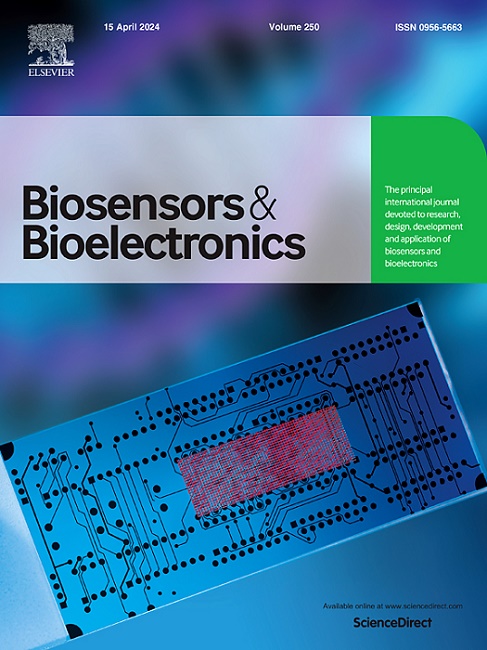无线,无电池,远程光激活吗啡,用于光药理学疼痛调节,无副作用
IF 10.5
1区 生物学
Q1 BIOPHYSICS
引用次数: 0
摘要
慢性疼痛严重损害身体、心理和认知功能。虽然基于阿片类药物的治疗可能有效,但它们受到耐受性、依赖性和不良副作用的限制,因此需要更安全的替代品。光药理学的最新进展允许精确调节疼痛相关的神经元回路,提供改进的控制和有效性。对于光的传输,完全可植入的、无线的、小型化的无电池光学系统相对于传统的大块硬件和光纤缆绳提供了更有吸引力的选择。这项工作提出了一种基于微尺度发光二极管(μ-ILEDs)和近场通信(NFC)协议的这种类型的技术,并优化了在脊髓的目标区域激活光固定吗啡(pc-Mor)。独特的灵活,轻巧的设计确保了小动物模型行为研究中稳定,微创的操作,具有高效的功耗和对脆弱组织的热负荷最小化。实验结果表明,在动物疼痛模型中有效抑制疼痛并减少阿片类药物相关的副作用,从而建立了该平台作为慢性疼痛管理的有希望的解决方案。本文章由计算机程序翻译,如有差异,请以英文原文为准。
Wireless, battery-free, remote photoactivation of caged-morphine for photopharmacological pain modulation without side effects
Chronic pain severely impairs physical, psychological, and cognitive functions. While opioid-based therapies can be effective, they are limited by tolerance, dependence, and adverse side effects, highlighting the need for safer alternatives. Recent advances in photopharmacology allow precise modulation of pain-related neuronal circuits, offering improved control and effectiveness. For delivery of light, fully implantable, wireless, battery-free optical systems in miniaturized forms offer attractive options relative to alternatives that use conventional bulk hardware and fiber optic tethers. This work presents a technology of this type, based on microscale light-emitting diodes (μ-ILEDs) and near-field communication (NFC) protocols, and optimized to activate photocaged morphine (pc-Mor) in targeted regions of the spinal cord. The unique flexible, lightweight designs ensure stable, minimally invasive operation in small animal model behavioral studies, with efficient power consumption and minimized thermal load on fragile tissues. Experimental results demonstrate effective pain suppression and reduced opioid-related side effects in an animal model of pain, thereby establishing this platform as a promising solution for chronic pain management.
求助全文
通过发布文献求助,成功后即可免费获取论文全文。
去求助
来源期刊

Biosensors and Bioelectronics
工程技术-电化学
CiteScore
20.80
自引率
7.10%
发文量
1006
审稿时长
29 days
期刊介绍:
Biosensors & Bioelectronics, along with its open access companion journal Biosensors & Bioelectronics: X, is the leading international publication in the field of biosensors and bioelectronics. It covers research, design, development, and application of biosensors, which are analytical devices incorporating biological materials with physicochemical transducers. These devices, including sensors, DNA chips, electronic noses, and lab-on-a-chip, produce digital signals proportional to specific analytes. Examples include immunosensors and enzyme-based biosensors, applied in various fields such as medicine, environmental monitoring, and food industry. The journal also focuses on molecular and supramolecular structures for enhancing device performance.
 求助内容:
求助内容: 应助结果提醒方式:
应助结果提醒方式:


